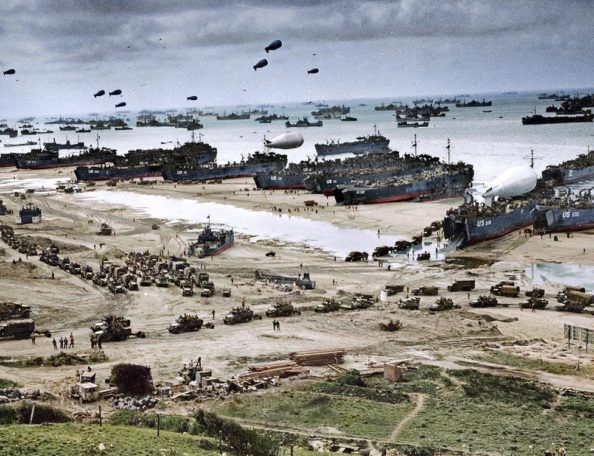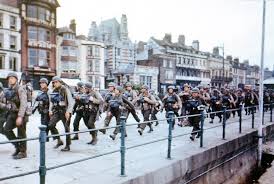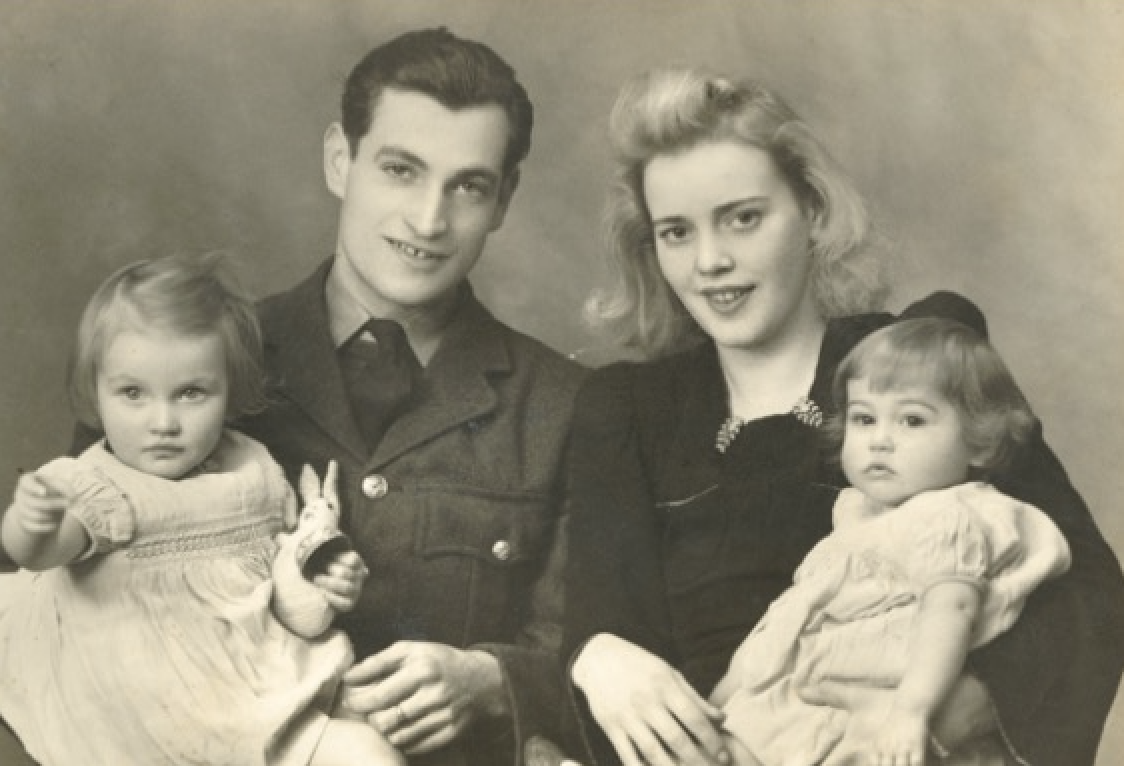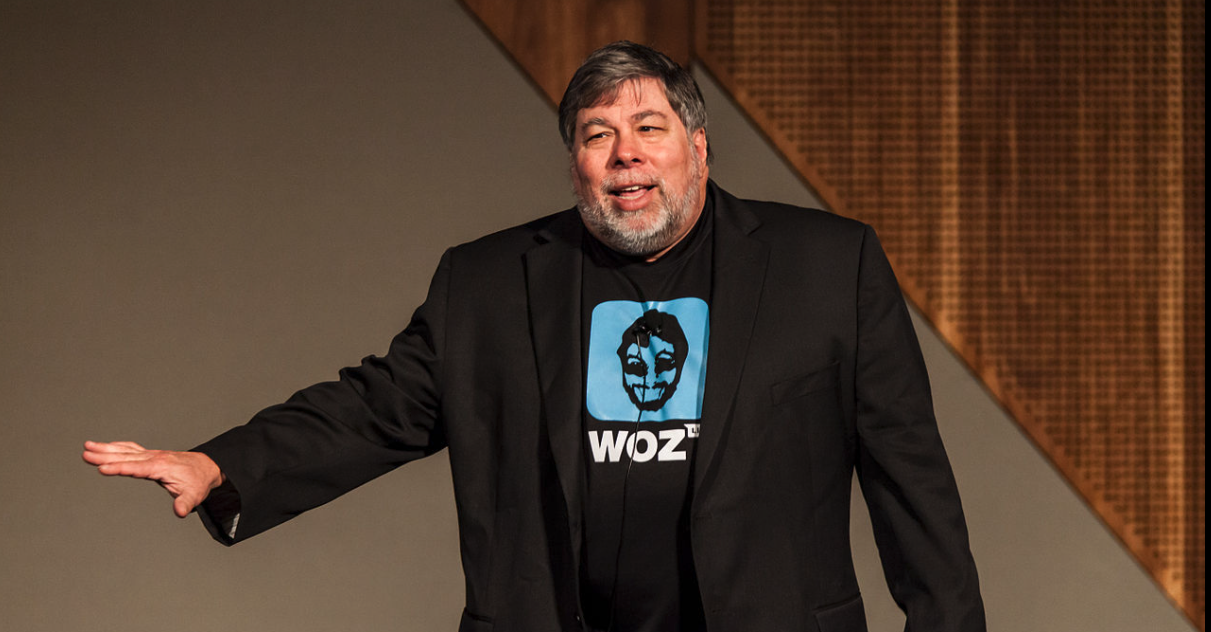My grandfather was an incredible man. He served in the British army and fought in the Allied invasion of Normandy, known now as D-Day, on June 6, 1944. D-Day, codenamed Operation Overlord, was the largest seaborne invasion in history and marked the turning point of World War II. Like so many soldiers, my grandfather rarely talked about his times during the war but fortunately, he agreed to share his story with my grandmother on my request.
His story is indeed one of bravery and commitment. My grandfather was not an ANZAC veteran but having arrived in Australia in the 1950s with his wife Marjorie and my mother and her sister Glenys, he considered himself an Aussie in spirit. He was a proud Aussie, although, he remained faithful to the British cricket team throughout his life. Grandad, who was a wonderful parent and grandparent, took pride in marching on Anzac Day with his fellow comrades, and even did so in the latter years of his life in a wheel chair.
As we celebrate ANZAC Day, we need to be ever thankful for all those who served or are serving in the armed forces. Lest we forget.

Here is my grandfather Alexander Kerr’s story about his experience in the famous D-Day landings as told by him and written by my grandmother many years later.
3209 SERVICING COMMANDO UNIT.
D.DAY – NORMANDY FRANCE.
LANDED EARLY IN THE MORNING OF JUNE 6TH 1944.
Our unit had become so accustomed to early morning movement it was automatic for us to get up and dress in full battle kit then embark on transport to take us who knew where?
On the night of June 5th we were addressed briefly by our Commanding Officer. He told us we were about to embark on the action for which we had been trained. Our movements were to be carried out in silence, which was OK because none of us felt like talking.
Under shrouded lights, at an unknown and un-named dockside, teeming with military activity, we came under the control of naval personnel who were allocating units to vessels.
We were instructed to check our equipment before we trooped on to landing barges. We carried a variety of firearms and ammunition such as Bren guns, 303 rifles, Bayonets and a Commando knife or ‘Dirk’, as it is called.
The Bren gun is a light machine gun firing 303 rifle bullets at the rate of 500 R.P.M. It is 45 inches long and weighs about 23 lbs. When firing from a prone position, the weapon is equipped with two fold down legs. Because of its weight, it can be fired like a rifle or from the hip.
I carried a Sten gun, this is a quick firing sub-machine gun modelled on the American Tommy gun which fires 9 millimetre bullets at the rate of 700 rounds per minute. For this, I had 12 additional magazines each filled with 33 Sten bullets. I also carried six hand grenades and my Commando knife, a long dagger, strapped to my right thigh.
Our back packs contained all of our personal gear, blanket, waterproof cape, dungarees, a few pieces of underclothing and shirts, toiletries and mess tins. Strapped on the outside was a small shovel for digging trenches. Needless to say, after a few hours this load felt like it weighed a ton.
About this day it is difficult to recollect. One does tend to become involved in just following the training without question and that is uppermost in your mind. I remember just sitting waiting for something to happen and then the ramp going down and hearing the command to disembark onto the beach.
Some of my best mates did not even make it to the beach.
They were torpedoed by a German E. Boat on patrol. We heard later the E. Boat was on a training exercise and stumbled into the start of the invasion. A Royal Naval Destroyer sank it soon after we landed.
Activity in the channel was unbelievably frenetic. As far as the eye could see there were hundreds and hundreds of vessels all heading to the French Coast. The skies were filled with aircrafts, fighters and bombers flying North and South. As we neared the coast the noise of heavy gunfire was both deafening and frightening.
War historians write that active war is 90% noise and 10% danger. This was cold comfort to us. The noise was terrible. I remember clearly the tense atmosphere, the bloody uncomfortable seating, the rolling of the boat making us all sea sick in spite of the anti-nausea pills.
When the command to prepare to disembark rang out, the rush of adrenalin dispelled all other thoughts and the knots in my stomach tightened and twisted.
Down went the ramp and into the water we plunged. It was up to our thighs and freezing but I was completely oblivious. I recall just cursing the water for slowing our journey to the beach. We landed on the beach at Ver sur Mer. This is at the extreme eastern end of the beach head, code named ‘Gold Beach’ and specific for the landing of British troops.
Our beach was centred around Arromanche. To the extreme west we could see the American landing areas, code named Omaha and Utah. Further east were Juno and Sword Beach Heads.
Amidst the mayhem, we scrambled up to the beach littered already with the dead and wounded. The medical teams doing what they could. On the beach we joined the Royal Marine Commandos. It sounded like we had landed in hell, the constant noise of gunfire and the screams of the wounded, from both sides, is a memory I can never forget. The stench of death lives with all who have seen this type of action.
We moved away from the beach and fought our way towards the small town of Ver sur Mer which seemed to be full of snipers. The French population disappeared into their cellars whilst house to house fighting continued all day as we fought to clear the area. A few of the snipers were indeed young French women and some of our own were shot in the back.
Thinking on it now I realise Normandy had been occupied by the Nazis for four years and many of the girls would have been attached or married to German soldiers. Never the less it really shocked us to see young women handling guns and shooting to kill.
Our objective was to clear the town of enemy resistance. We worked in small twelve men patrols and during one of the house raids my partner and I became separated from our patrol. The modus operandi was to storm the houses under fire cover from the rear guard. When we attained the new position, the rear section would go forward under cover of our fire.
Having come under fire from the top floor ,we were pinned down and extremely vulnerable. With no rear guard in sight we were hurling grenades and shooting short bursts of fire. Crouching behind a low wall, their bullets clipping the top of the bricks, it seemed an eternity before the back up team could assist. When they finally arrived we burst into the house only to find four dead German officers about the same age as ourselves. The house was obviously their billet, unfortunately the French family did not survive either.
We continued through the countryside fighting to make the area under our control. We finally captured the town of Bayeux, designated as the site for our base as the service unit for the RAF. The Royal Engineers had to first prepare the airstrip. They had designed a metal mesh which could be rolled out and joined to create an all weather landing strip. A tower was erected for the aircraft controllers and all this took about three days. During this period we were working like navvies, backwards and forwards to the beach head, off loading and transporting the aviation fuel and ammunition.

The gun emplacements were situated on the perimeters of the airstrip so the Royal Artillery could fight back as enemy aircraft strafed the fields. We were travelling with millions of rounds of live ammunition and 44 gallon drums of high octane aviation fuel, so you could say it was extremely hazardous and dangerous work during these first few days. We put in 14 to 16 hour days until we were ready for the real task of servicing the fighters.
I can still recall the thrill when the Spitfires landed and we set to work. The turn around time to refuel and rearm barely gave the pilots time to get out and stretch their legs. But at least the lucky bastards could return home to England each evening.

We had one tragedy on our strip. It happened on a windless day when the wind sock was lying limp. Aircraft take off and land into the wind with instructions from the control tower. Two Spitfires at opposite ends of our runway must have misheard their instructions as they both took off and crashed into each other at the peak of their take-off speed. It brought the disaster of our 77 squadron at Leeming Bar flooding back.
Activity was frenzied and constant with whole squadrons swooping in for servicing whilst other aircrafts flew around waiting for landing permission. The feeling and atmosphere between the ground crew and pilots was much more relaxed and familiar than we had known in England. I was extremely proud to have a discussion with Wing Commander John Johnson, known as Johnno, who was one of the current Aces. You are seen as an ‘Ace’ when you have shot down more than ten enemy aircraft.
Pilots would bring in the daily UK newspapers which we devoured. It was great to read in our own language as well as get a handle on how the war was going.

During the day, we could see and hear the American Superfortress (B29) flying very high over our position. Many times we saw an air fight conclude with the B29 being shot down. There is nothing quite as horrific to see an aircraft of this size hurtling to earth. To hear the wailing, screaming engine noise as they spiral to the ground and then count the parachutes of the airmen who managed to escape.
After the Germans recovered from the shock of the invasion they gathered strength and counter-attacked pushing our advancing troops back. The ensuing bombardment and tank activity almost destroyed the entire city of Caen.
We had a Harley motor bike on camp and on one of my ‘unofficial’ forays into the countryside I ventured into the outskirts of Caen. It had been extensively bombed but I did see one large building still in tact. I now believe this to have been the Abbey of the Women.
Our work never let up. Indeed the further the fighting went into enemy territory, the more requirement for our fighter planes to be serviced. The original intention for our special unit was to advance and establish more airfields across the country. After two months, from June 6th to July 31st the RAF relief ground staff were finally posted from the UK and we received the news we were going home.
We travelled back home on an American naval vessel. As we were used to British army rations we were staggered at the feasts at meal time. White bread, tinned turkey, fruit and ice cream was every day fare. No wonder our boys rankled at the different treatment the American forces received.
We all hoped our war was over. Glad to be alive we played cards for hours betting on anything that moved. A game called Shoot saw me bet on the turn of a card to win 1,600 pounds. Sad to say I lost, C’est la guerre, et C’est la vie.
One evening the ship’s loudspeaker called the fire crew to report to the fantail. The urgent warning; “fire in the fantail” brought us back to reality. We were still in enemy territory even in the English Channel. We were all up on deck when we heard the sound of a British destroyer and its distinctive siren : Woof Woof: About 300 yards on our starboard the destroyer was steaming along side with the captain calling to our skipper on his loudspeaker.
“Where the devil do you think you’re going? Don’t you realise you are heading for the middle of a bloody mine-field”
The destroyer then escorted us into safe waters. Thank heaven for the Royal Navy.
We were given two weeks leave after which we had to report to a fighter squadron in Redhill. I recall this squadron flew Typhoons and they were brutes to work on. They had a special starting technique where the pilot pushed a button which fired a cartridge to start the engine. It was necessary for the ground crew to stand in front of the propeller armed with a fire extinguisher because the plane had a tendency to back-fire and burst into flames in the underside cowling.
It came as quite a shock when we were kitted out with jungle greens and Aussie slouch hats and on November 2nd 1944, I was on a troop ship bound for Burma via Bombay India.

Post script to Grandad’s story.
In June 1994 to commemorate the 50th year of liberation for France, Alexander Kerr was awarded a medal presented at l’Abbaye aux Dames de Caen. He is survived by three daughters my mother Jacqueline above and her two sisters Glenys and Sian and his many grandchildren.















